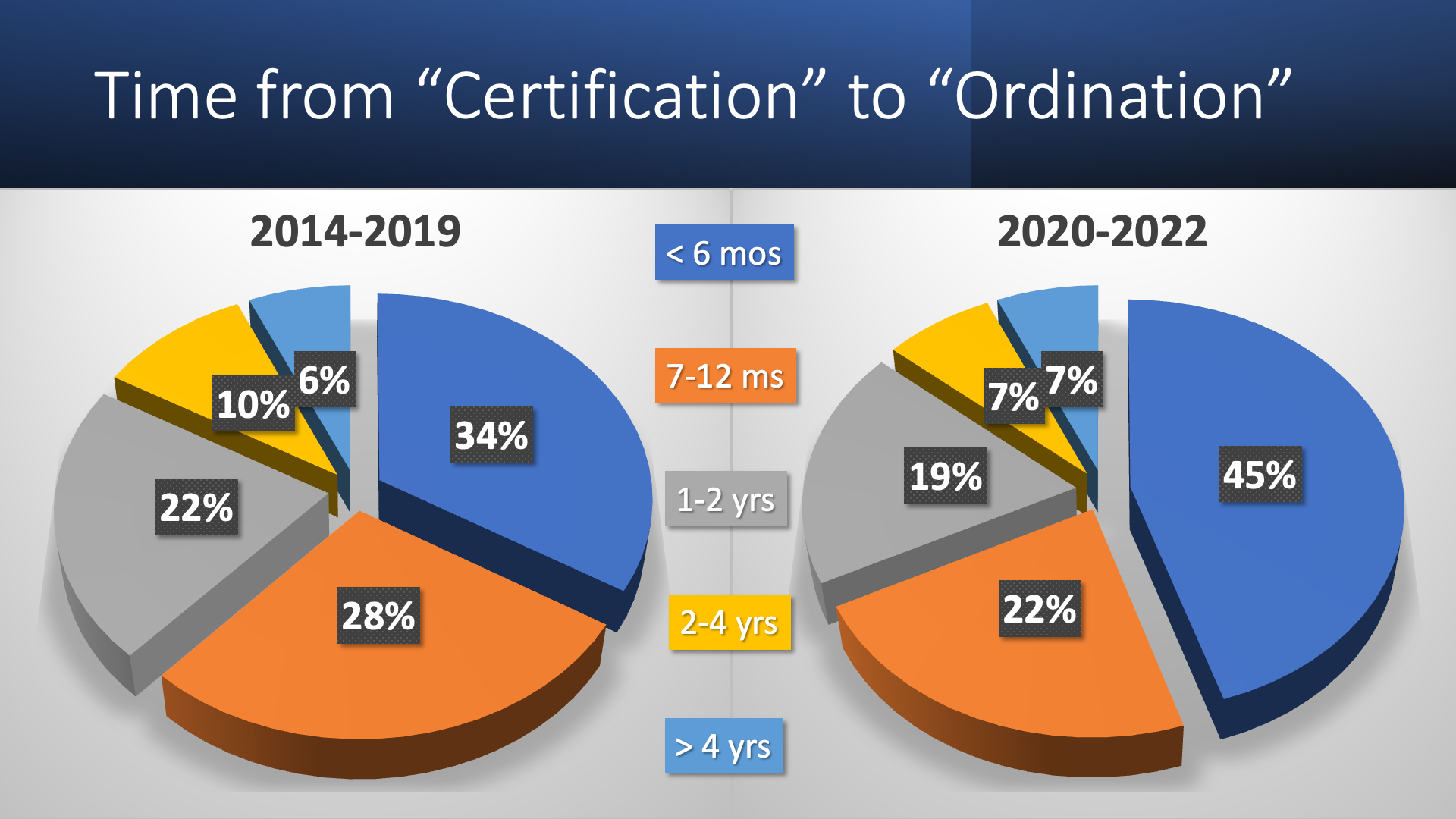From Seminarian to Minister
Information relating to the authorizations necessary to begin searching for a first call, a look at recent trends in finding calls, and some guidance on compensation items that are negotiated in PC(USA) pastoral calls.
Trends
Time Seeking a Call
So, what are the patterns in how long it takes to receive a first call? Well, to begin with, we need to return to where we began with the fact that candidates cannot begin to seek a call until they are at least given permission to "negotiate for service," and cannot accept a call until "certified ready for examination, pending a call." Consequently, the clock may not start at seminary graduation, and it doesn't stop until the person has been ordained (we will look at data regarding candidates still searching on the next page). Additionally, we don't in all cases have the dates for both when those receiving calls were "certified ready" and when they were "ordained." But as mentioned earlier, the samples we do have are large enough and random enough to likely represent the general trend.
Interestingly, as the chart below illustrates, time spent seeking a first call has decreased over the past few years (that is, since the peak of the coronavirus pandemic in 2020-21). Whereas roughly one-third (34%) received a call within six months in the period 2014-19, that percentage has risen to 45% (just over 3-in-7) in the period 2020-2022. During the more recent period, two-thirds (67%) of candidates found calls within a year. Though we don't have firm numbers for how long already ordained ministers spend looking for second and subsequent calls, at least anecdotally the trends are comparable for how long it takes to receive first calls and new subsequent calls.

Additional statistics show that more women than men have been ordained each year since 2012 and that there are no significant differences (given the margins of error) in the distribution of women and men in the different time durations (ranging from equal to 4%).